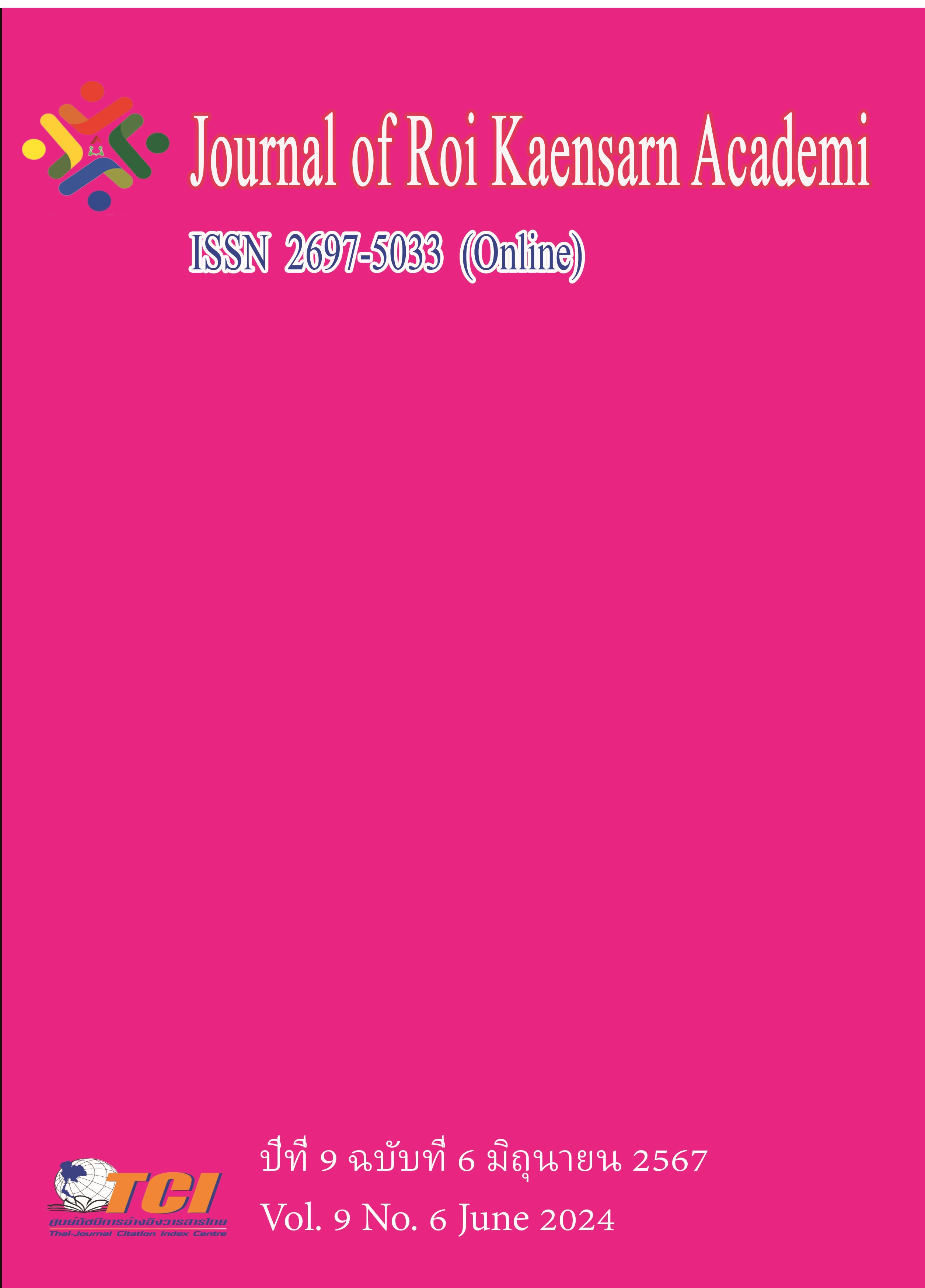The Communicative Function of Text Graphic Design as Visual Symbols in Multicultural Interaction
Main Article Content
บทคัดย่อ
This article aims to study (1) To study the interactive relationship between characters and graphics in the historical development, (2) To study and compare typical cases of interchange design between characters and graphics in Chinese and foreign design history.and (3) To research and create cross-cultural semantic design works with a focus on effective communication, considering public demand as a premise. In this study, the researcher established a research framework and adopted qualitative and quantitative research methods, including literature review, questionnaire survey and semi-structured mixed research methods such as interviews. Taking Chinese characters as an example, this paper analyzes the actual effects and existing problems of text graphic design as visual symbols in multicultural interaction.
The research results are as follows: (1) Text and graphics continue to develop in a relationship that promotes and achieves each other. (2) The emergence of Chinese oracle bone inscriptions and Western Latin letters are both derived from graphics. (3) “Visibility means knowing” is the primary need for visual information among different cultural groups.
Article Details
เอกสารอ้างอิง
Baine, B. K. (2021). Reading Graphic Design History: Image, Text, and Content. Design and Culture. 13 (3), 341–344.https://doi.org/10.1080/17547075.2021.1973786
Beegan, G. (2021). Reading Graphic Design History: Image, Text, and Context. Journal of Design History. https://doi.org/10.1093/jdh/epab022
Dennison, J. (2014). Situating Graphic Anthropology. Visual Anthropology. 28 (1), 88–108. https://doi.org/10.1080/08949468.2015.973339
Lippmann, W. (1922). Public Opinion. New York: Harcourt, Brace & Co.
Maria, A. (2011). Graphic advertising, specialized communications model through symbols, words, images words, images. Journal of Industrial Design and Engineering Graphics. 6 (1), 9–12.
Mcluhan, M. (1964). Understanding Media: The Extensions of Man. Berkeley, Calif.: Gingko Press.
Mohamad Faizuan Mat, Naemah, S., & Nourah Nasser Al-Nahari. (2023). A Discussion on Interdisciplinary Approach of Visual Art Syllabus in Malaysian Higher Education. Journal of Visual Art and Design. 15 (1), 68–84. https://doi.org/10.5614/j.vad. 2023.15.1.5
Noble, I., & Bestley, R. (2005a). Visual research: an introduction to research methodologies in graphic design. Lausanne, Switzerland: Ava Publishing.
Noble, I., & Bestley, R. (2005b). Visual research: an introduction to research methodologies in graphic design. Lausanne, Switzerland: Ava Publishing.
Tsai, C.-Y. (2017). Effect of graphic simplification and graphic metaphor on the memory and identification of travel map. International Journal of Industrial Ergonomics. 61, 29–36. https://doi.org/10.1016/j.ergon.2017.05.016
Usunier, J.-C, & Roulin, N. (2010). The Influence of High- and Low-Context Communication Styles On the Design, Content, and Language of Business-To-Business Web Sites. Journal of Business Communication. 47 (2), 189–227. https://doi.org/10.1177/0021 943610364526
Rand, P. (1987). Good Design is Good Will | Paul Rand: Modernist Master 1914-1996. Online. Retrieved from www.paulrand.design website: https://www.paulrand.design/writing/ books/good-design-is-good-will.html

